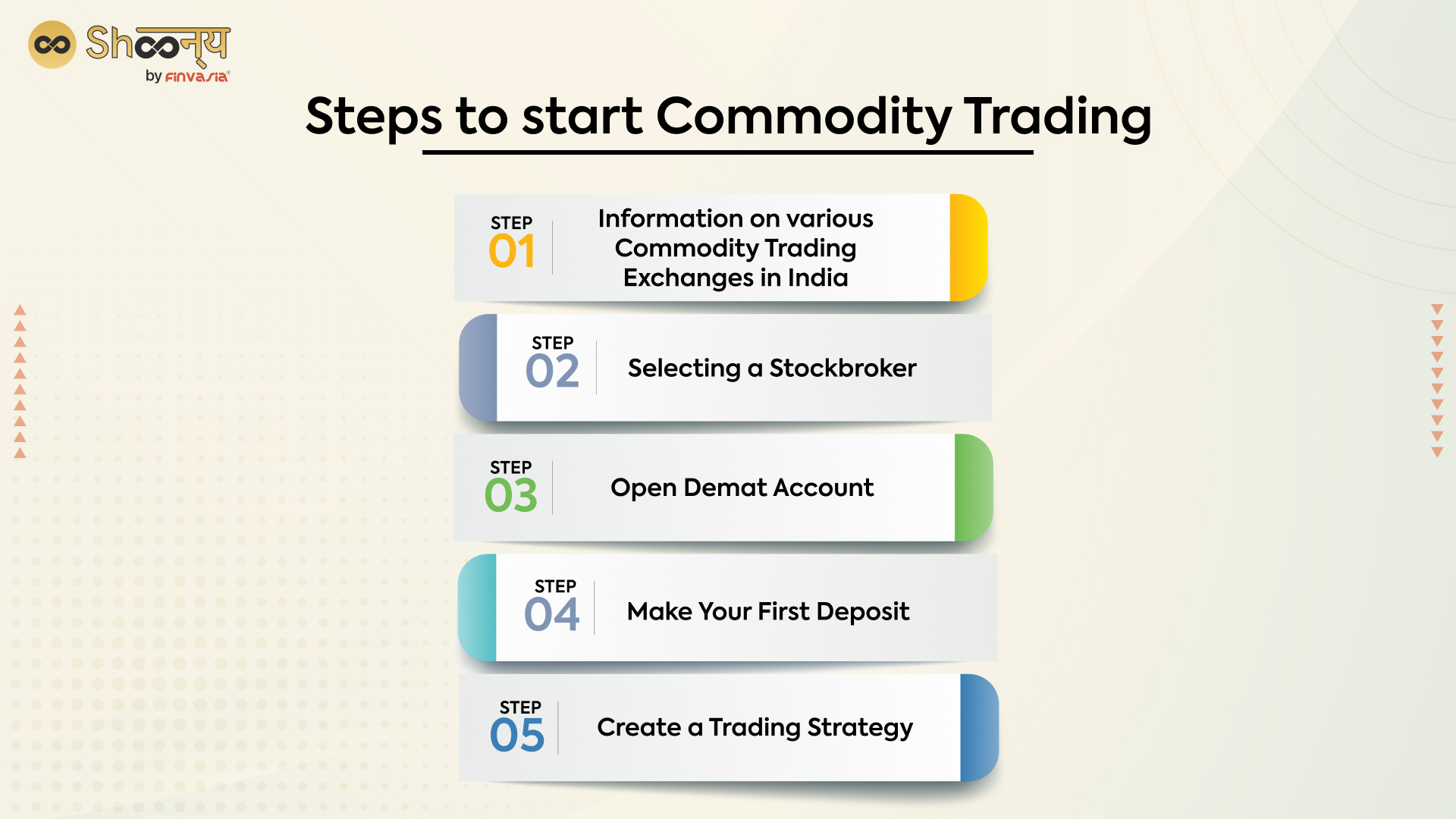A Steps to Start Commodity Trading

Commodities are mainly raw materials that are utilized to produce refined goods and thus have intrinsic worth. Commodity traders tend to trade by buying and selling commodities such as metals, agricultural goods, oil, or petroleum on commodity exchanges to profit.
Step 1 – Information on various Commodity Trading Exchanges in India
The first step in entering commodity trading is to become knowledgeable about all of the exchanges where commodities are traded.
Commodities are traded in India through these six major exchanges:
- India’s National Multi Commodity Exchange (NMCE)
- National Derivatives and Commodity Exchange (NCDEX)
- Indian Commodity Exchange (ICEX)
- Indian Commodity Exchange (ICEX)
- Multi Commodity Exchange of India (MCX)
- National Stock Exchange (NSE) Bombay Stock Exchange (BSE)
Step 2: Selecting a Stockbroker
The next critical step before beginning commodity trading is to find a trustworthy and efficient stockbroker.
1. The Securities and Exchange Board of India must regulate and register the broker (SEBI).
2. Before choosing an efficient and best stock brokerage firm, conduct thorough market research.
This step is critical because brokers provide traders with information about commodity trading and help them make informed decisions through their recommendations.
Step 3: Open Demat Account
After you’ve decided on a broker, you’ll need to open a Demat account.
Tip: Shoonya, a zero-lifetime brokerage trading platform, offers a free Demat account.
Following that, you must fill out an application form and provide all necessary information to your broker, such as age, income, financial status, and so on.
The broker is required to review all of your background information to ensure your risk-taking abilities and ability to repay debts if the market falls.
When an investor’s application is approved by the broker, the Demat account is instantly opened.

Step 4: Make Your First Deposit
Once your commodity trading Demat Account is established, you must make a small investment to begin trading. This is followed by a 5 to 10% initial margin based on the contract value. For example, the initial margin will be 5-10% of the value specified of your commodity in your contract.
This initial margin protects you against the market if other scenarios have a negative impact.
Step 5: Create a Trading Strategy
Make a plan for yourself before you start commodity trading.
The primary reason for developing a trading strategy is to become acquainted with and comprehend the market. It is also designed to help you understand your own financial capabilities, risk tolerance, and personal style.
Roadmap Ahead
Commodity trading is an appropriate investment strategy because changes in commodity prices can result in large profits or losses; however, investors must be risk-averse. However, we believe that commodity trading may have some ups and downs, which are, of course, less risky than fluctuations in stock and bond investments.
To ensure their commodity trading flourishes, investors who want to broaden in an asset category could invest 20-30% of their portfolio in commodities. If you are planning to start commodity trading, contact Shoonya; we offer a zero-commission trading platform with no commissions, no clearing charges, no technology fees, no monthly maintenance fees, and no minimum balance.








